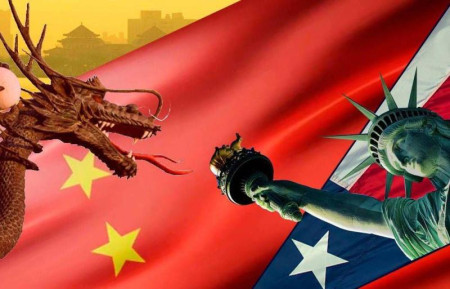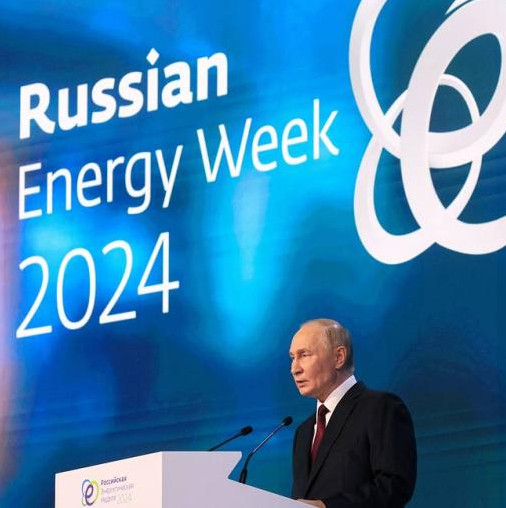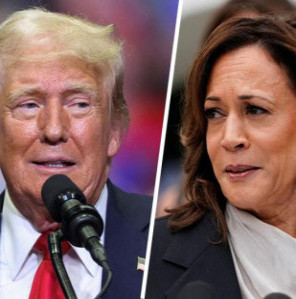
It has been six years since then US President Donald Trump initiated a trade war against China by imposing 25-percent tariffs on its electronics and a number of other goods in 2018. Before that, China had been the United States’ largest supplier of cheap industrial items for 16 years — goods whose production required no advanced technologies, or its own scientific developments, or highly skilled labor. But by the early 20s, the situation had changed and nearly half of China's exports to the United States were already electronics and engineering stuff. The latter did not fit in with the US economic strategy to manufacture and export high-value-added production while importing raw materials and inexpensive goods and products.
Amid China's transformation from a major trading partner into the key technological rival, the Trump-initiated anti-Chinese trade policy has been expanded under Joe Biden. Tariffs have been raised on that country’s e-vehicles, semiconductors, solar panels, lithium-ion batteries, graphite, permanent magnets, and rare earth minerals. And a number of steps taken by the Biden administration have been a lot more radical. For example, after Biden's 100% import duty on Chinese electric cars, Trump’s once highly controversial "eight strikes" has started looking like chicken play.
Anti-Chinese policy has now covered new directions. Its priority is measures to curb the PRC’s technological advance by limiting supplies of cutting-edge chips and related gadgetry, as well as dual-use equipment. Thus, restrictions have been introduced to prevent the sale to China of chips used in the AI industry and the production of supercomputers, by companies from any country in the world, if they are developed with US technologies and/or equipment. The American authorities have also included 37 Chinese entities in the list of companies subject to export restrictions, as in their opinion those sought to obtain American goods to assemble drones that may be used by the Chinese military.
These moves have been complemented by measures to subsidize the US own production. Thus, October 2022 saw the Biden administration announce the allocation of $2.8 bn in subsidies to expand domestic production of batteries for e-vehicles. The goal is to accelerate the shift away from China by creating a system that allows American companies produce rare earth metals needed to manufacture batteries.
In parallel with the restrictions, the United States has started seeking to replace Chinese goods in other Southeast Asian countries and invest heavily in creating production facilities in the border areas of Mexico.
China, in turn, has tried to retain positions it achieved in the American market. So, in response to subsidizing production in the United States, Chinese battery giants CALL and Gation opened factories in Michigan for Ford — with federal subsidies.
At the same time, the Chinese authorities began to form new supply chains to the United States via third countries. To do this, they "softened" their attitude towards partners from Southeast Asia and started engaging in joint ventures in them that had already exported their products to the US. As a result, third countries — Vietnam, Mexico, etc. — assumed the role of intermediaries, which had a positive effect on their economies. Thus, Mexico’s trade turnover with China increased by 34.8 percent in 2023, with exports exceeding imports by 11 times. For Vietnam, the former figure reached $230 bn, almost the same as with Germany ($235bn). And the process is gathering momentum. In 2024, the number of logistics and production projects announced for Mexico and Vietnam was 41 and 39 correspondingly, and they overtook the United States as areas of development for Chinese projects. Most of products manufactured are being "re-exported" to the United States.
What are the odds?? At first glance, the United States has managed to achieve significant success. The share of Chinese products in its total imports fell from 21.6 percent in 2017 to 14.6 percent in 2023, or to the level of 2005. The trade deficit has been significantly reduced. By the end of 2023, it amounted to $279bn as compared to over $400bn in 2018. The greatest negative effect for China was the partial loss of direct foreign investment which prompt development of Chinese technologies. And yet, United States has failed to weaken China much. Russia has also had a hand in, letting the Chinese car industry gain an extensive unoccupied niche in its Russian market amid no competition with Western companies. Besides, the PRC has solved part of its economic issues through the expansion of BRICS and further engagement in Africa.
Deteriorated relations have had a lot stronger impact on the United States. In particular, the increase in tariffs for China has been a catalyst for domestic inflation growth, with several million jobs lost due to their flow to China. As experts with the Economist magazine noted in an article, "Joe Biden’s China strategy is not working. Supply chains are becoming more tangled and opaque." The outcome has been as follows for the Biden administration: "tariff escalation," tighter export controls, “supply chains have become more tangled and opaque as they have adapted to the new rules,” “direct economic links between China and America are shriveling.” As an alternative, America has turned to India, Mexico and Southeast Asia. However, production in these countries is highly dependent on the supply of Chinese products and resources. For example, imports of intermediate manufacturing materials from China to Southeast Asia increased sharply along with its exports to America. Chinese exports of car parts to Mexico, one of the countries benefiting from American risk reduction, have doubled over the last five years. As for the advanced manufacturing sectors, where America is most eager to move away from China, these countries, which have penetrated the American market to the greatest extent, enjoy the closest industrial ties with Beijing. As a result, supply chains have become more complicated and trade more expensive, but China's dominance has still not been affected.
And finally, another long-term consequence of the trade war has been the trend for global economy fragmentation: China and the United States are becoming leaders of separate blocs of countries — BRICS and G7. And this is going to limit America's economic clout while strengthening China at the same time.









